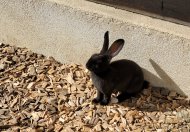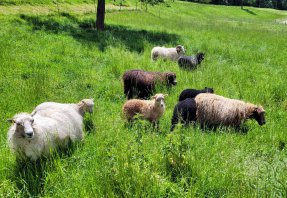
Les 9 Mondes
History and Fantasy Crafts
Legal terms | Privacy
TANNING
We generally get the skins frozen. After thawing them, we carefully flesh them to get rid of the inner membrane and remaining fat, and tan them in an alum and salt bath.
When the tanning is complete, we wash the furs thoroughly and let them dry, a process during which a very frequent attention is required to stretch and scrape the skins to soften them as they dry.
FURS AND PELTS
First off, we do not endorse fur farming.
With this tanning activity, we are aiming for a zero-waste objective.
The rabbit and lamb skins we tan come from Swiss animals, raised in a small familial farm and we can vouch for their respectuous breeding. They are raised for their meat and we collect the skins so they do not go to waste, thus giving these animals even more value.
From our shop
In association with the chalet


